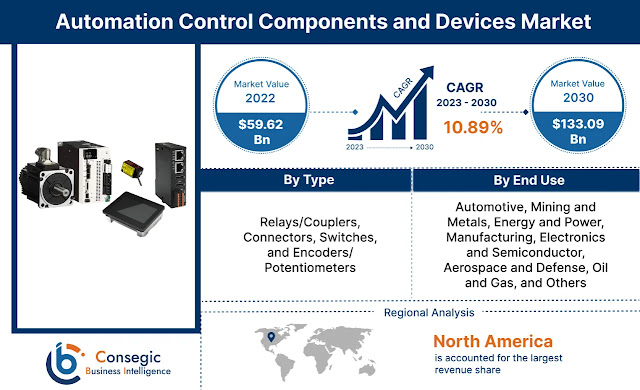Scaling the Future: Unlocking the Hyperscale Data Center Market Opportunity
The Hyperscale Data Center Market is entering a golden era of growth and investment. In 2024, the market stood at USD 49.22 billion, with projections placing it at USD 59.09 billion in 2025. Looking further ahead, the market is estimated to reach over USD 238.19 billion by 2032, expanding at a Compound Annual Growth Rate (CAGR) of 25.1% from 2025 through 2032. This exceptional growth rate signifies more than just increasing demand—it reflects a global digital transformation where compute power, AI, and real-time services drive enterprise priorities.
1. Opening Insight (Hook)
Data is the new oil—but it’s not just the volume that matters. It's how fast and efficiently it can be processed, stored, and delivered. As global businesses adopt AI models, IoT infrastructure, and 5G applications, the demand for high-performance, ultra-scalable computing environments is skyrocketing. Hyperscale data centers have emerged as the backbone of this shift—fueling cloud-native services, real-time analytics, and resilient digital ecosystems.
This market is not just growing—it’s redefining digital infrastructure, influencing everything from consumer tech to national security.
2. Market Evolution & Significance
The hyperscale data center has evolved from a niche architectural concept into a cornerstone of global IT strategy. Initially driven by cloud giants seeking internal efficiency, hyperscale design is now being embraced across sectors—from fintech and e-commerce to public sector digitalization.
Three forces are accelerating its momentum:
-
AI Workload Expansion: Generative AI, LLMs, and machine learning pipelines require enormous computing capabilities. Hyperscale infrastructure allows AI to scale with performance reliability and energy efficiency.
-
Cloud Consolidation & Edge Growth: Enterprises are centralizing workloads into hyperscale hubs while balancing latency via edge computing. This dual strategy is reshaping both urban and regional data center development.
-
Sustainability Pressures: Regulatory and investor demands for carbon transparency are steering organizations toward hyperscale facilities optimized for energy reuse, water efficiency, and green power procurement.
In short, hyperscale is no longer optional—it’s the foundation for digital resilience, scalability, and innovation.
3. Market Segmentation
Understanding the hyperscale ecosystem requires breaking it down into key layers:
By Component:
-
Solution
-
Cooling
-
Power
-
IT racks & enclosures
-
LV/MV distribution
-
Networking equipment
-
DCIM (Data Center Infrastructure Management)
-
Service
-
Installation & deployment
-
Maintenance & support
-
Monitoring services
-
By End Use:
-
Cloud providers
-
Colocation providers
-
Enterprises
By Application:
-
BFSI
-
Retail & e-commerce
-
Government
-
IT & telecom
-
Entertainment & media
-
Others
This detailed segmentation highlights how diverse needs are driving innovation—whether it’s low-latency for media streaming, compliance-ready hosting for government, or hyper-efficiency for financial trading systems.
4. Key Industry Players
Google (U.S.)
Broadcom (U.S.)
Cisco Systems Inc. (U.S.)
Dell Inc. (U.S.)
Amazon Web Services (U.S.)
Equinix Inc. (U.S.)
Huawei Technologies Co., Ltd. (China)
IBM Corporation (U.S.)
Microsoft Corporation (U.S.)
Schneider Electric SE (France)
5. Recent Developments & Future Outlook
Recent strategic shifts and innovations are reshaping the market landscape:
-
AI-Optimized Infrastructure: Hyperscalers are deploying custom chips, advanced cooling (liquid and immersion), and neural net accelerators to handle surging AI workloads.
-
Colocation Surge: Enterprises are moving toward hybrid models, increasingly renting hyperscale capacity through colocation partners for scalability without the capital burden.
-
Sustainability-First Data Centers: Leading players are retrofitting existing centers and designing new builds around carbon neutrality, PUE optimization, and circular hardware lifecycle strategies.
-
Geopolitical Influence: Nations are tightening controls over data sovereignty and localization, leading to regional hyperscale hubs that cater to compliance needs while reducing cross-border data flow risks.
Looking forward, the next wave of hyperscale innovation will likely emerge from automated orchestration, AI-driven infrastructure management, and decentralized data center architectures designed for planetary-scale applications.
6. Regional Analysis of Hyperscale Data Center Market Market
North America
Remains the epicenter of hyperscale activity, driven by tech behemoths, rich connectivity infrastructure, and a mature cloud ecosystem. The U.S. leads in both innovation and scale.
Asia Pacific
Emerging as the fastest-growing region. High data consumption, government digitization programs, and massive cloud adoption in countries like India, China, and Singapore are fueling regional hyperscale growth.
Europe
Shows steady expansion, especially in Germany, the Netherlands, and the Nordics. EU energy-efficiency mandates are making sustainable hyperscale facilities a competitive differentiator.
Middle East & Africa
An emerging frontier for hyperscale. Strategic investments in smart cities, 5G, and digital-first governance are paving the way for regional deployments.
Latin America
Regions like Brazil, Chile, and Mexico are gaining momentum due to cloud expansion and favorable regulatory support for foreign tech infrastructure investments.
Conclusion
The Hyperscale Data Center Market is not just scaling data—it’s scaling global potential. With a projected CAGR of 25.1% through 2032 and use cases spanning every major industry, this market represents a strategic imperative for digital-first enterprises and forward-thinking investors.
As AI, edge, and sustainability converge, hyperscale infrastructure will become the blueprint for tomorrow’s global economy.
The question isn’t whether to enter the hyperscale market—it’s how fast you can scale into it.




Comments
Post a Comment